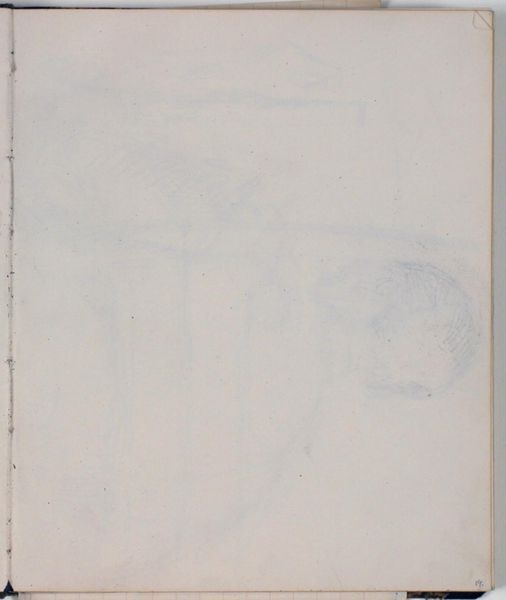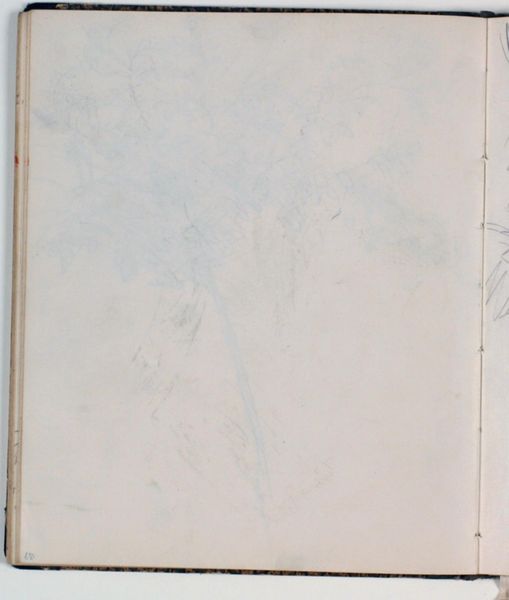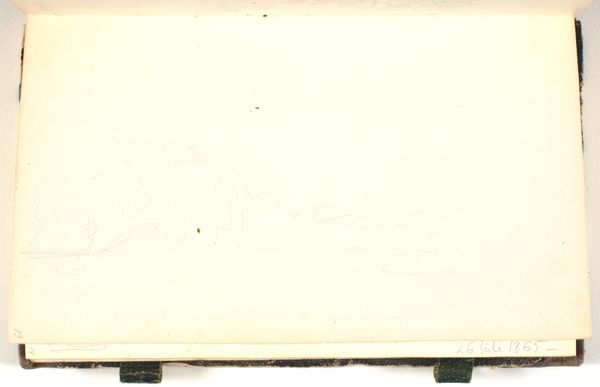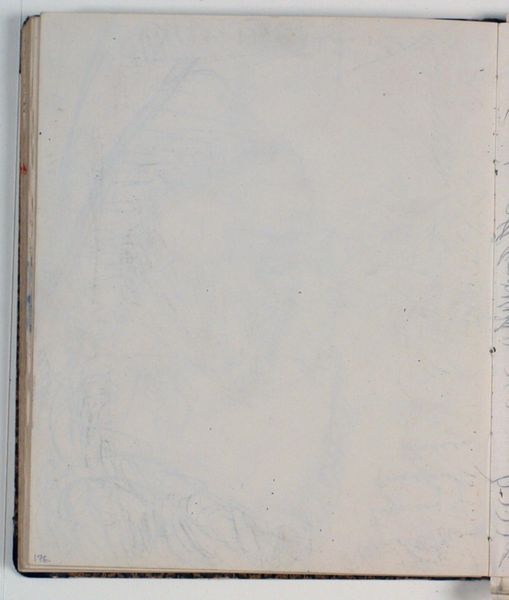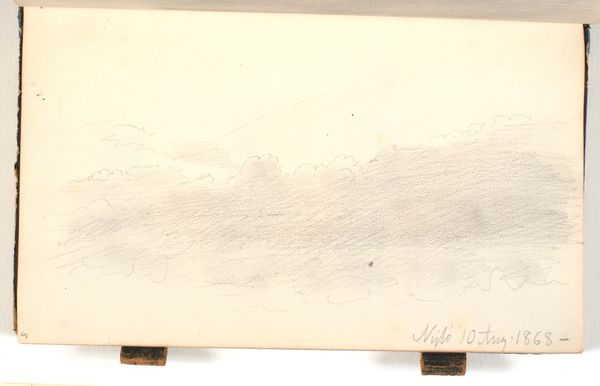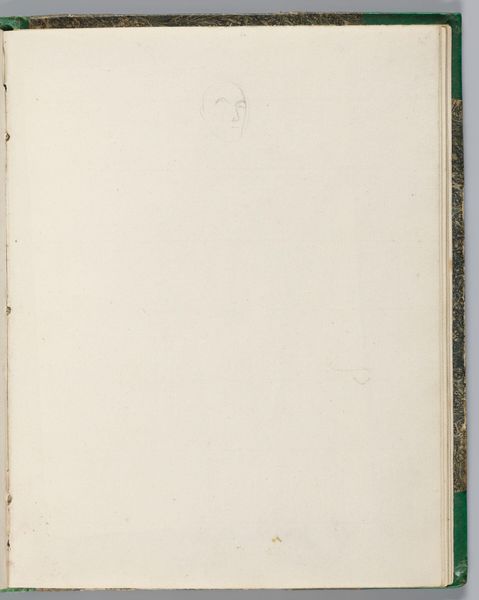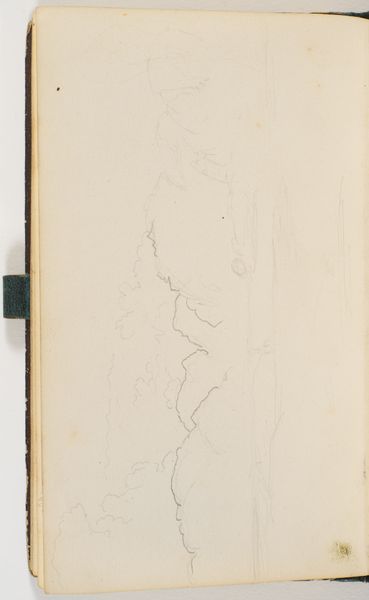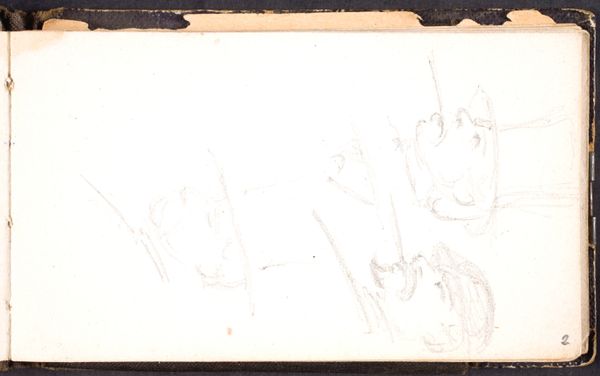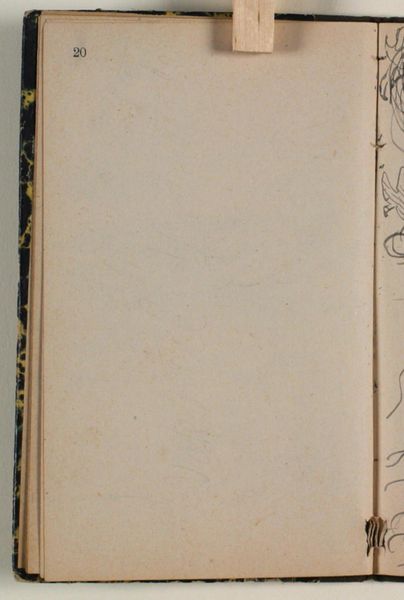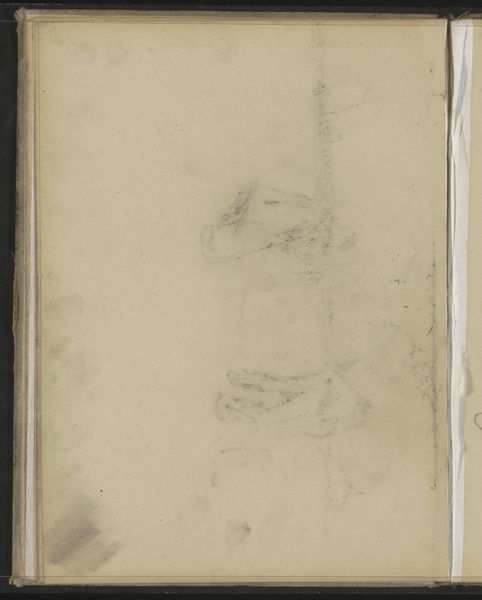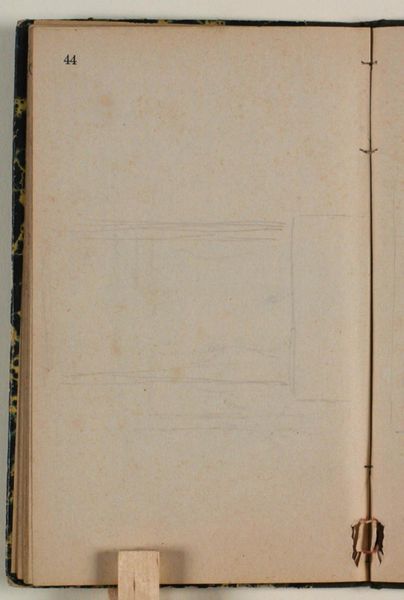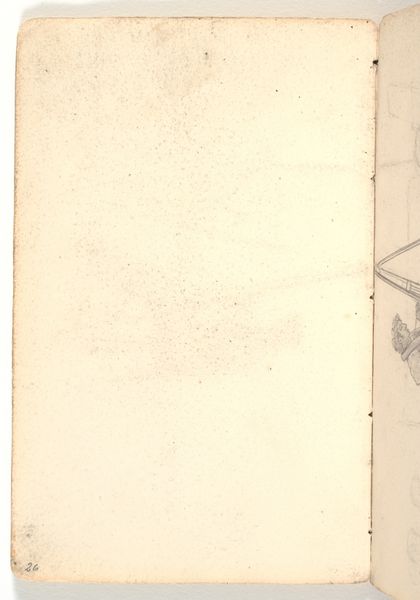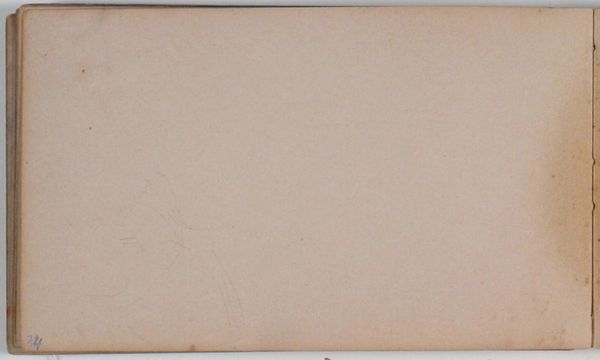
drawing, pencil
#
drawing
#
water colours
#
landscape
#
coloured pencil
#
pencil
Dimensions: 163 mm (height) x 100 mm (width) (bladmaal)
Editor: Here we have P.C. Skovgaard’s "Tall Trees in a Garden with a Figure in the Foreground", created around 1865. It looks like a preliminary sketch, a mixture of pencil, colored pencil, and watercolors. There’s a fragility to the piece with its very light washes of color. What’s your take? Curator: For me, the beauty of this drawing resides in its raw materiality. We see Skovgaard’s labor, the very process of creation laid bare. Think about the pencil marks, the deliberate application of watercolor; these aren't just representational but physical acts, using materials readily available to him in this era. Editor: So, you’re focusing on the "making" of the work itself, rather than the garden scene depicted? Curator: Precisely. Landscape painting often romanticizes nature. But looking at the pencil strokes, the way the colors bleed into the paper, draws attention to its production. Was this sketch meant for something else, or did the process of marking it *itself* hold value? And who was the intended audience? Knowing more about 19th-century drawing materials and artistic labor practices could help answer that. Editor: I hadn't considered it that way. Seeing it as less about the final image, and more about the actions of creating it. It almost feels more intimate. Curator: It invites us to reconsider art's value, not as a finished object for consumption, but as an act rooted in material conditions. These humble drawings become powerful statements on labor and the creative process. How does that perspective sit with you now? Editor: That makes a lot of sense. I find that examining it closely shifts the emphasis from pure aesthetics to an appreciation for what went into the work. It prompts me to consider other art forms outside of traditional mediums like painting.
Comments
No comments
Be the first to comment and join the conversation on the ultimate creative platform.
